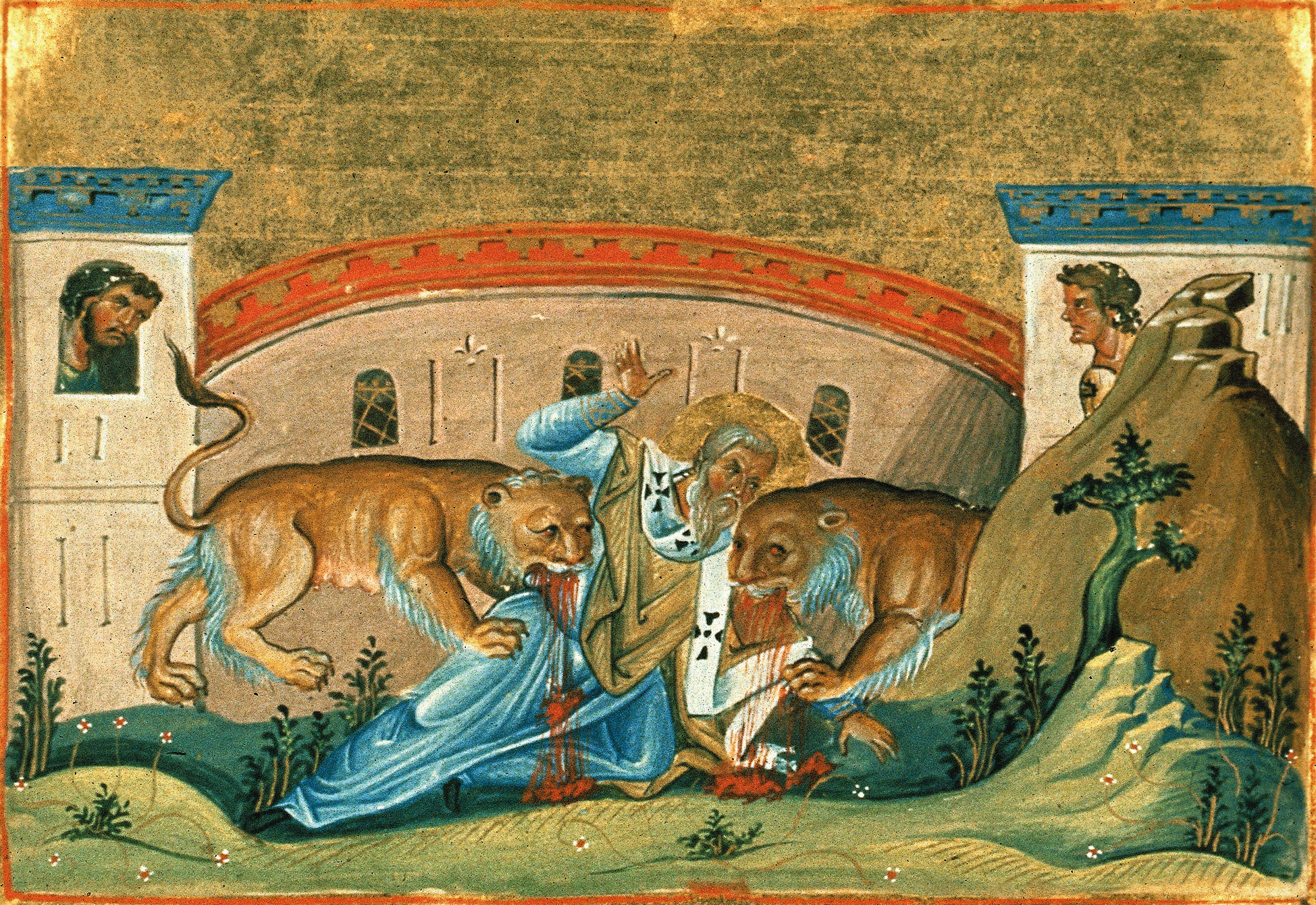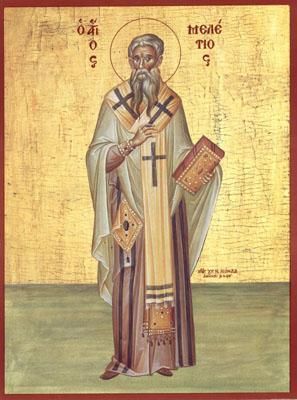The Holy Patriarchs of Antioch according to the First Millennium
- Part One: The Patriarchs of Constantinople
- Part Two: The Archbishops of Jerusalem
- Part Three: The Popes of Alexandria
- Part Five: The Popes of Rome
Calendars
The calendars that I have used for this compilation come from the Patriarchates of Jerusalem, Constantinople, and Rome.
Jerusalem
The Calendar of John Zosimus = Gérard Garitte, ed. and tr., Le Calendrier du Palestino-Géorgien du Sinaiticus 34 (Xe Siecle) (Brussels: Bollandist Society, 1958). John Zosimus was a Georgian monk and scribe who lived in Palestine in the tenth century, dying sometime around 990. He wrote a church calendar which survives in an autographed copy in Mount Sinai written in Georgian. The Calendar covers the entire year.
Constantinople
The Typicon of the Great Church = Juan Mateos, ed. and tr., Le Typicon de la Grande Église, Volume 1 (Rome: 1962). The Typicon shows the church calendar used in the Hagia Sophia at the middle of the tenth century. It relies on two manuscripts:
Codex H (Holy Cross Monastery Codex 40) is dated by Mateos to the years 950-970, with 950-959 being the more probable. Venance Grumel however dates the ms. to the end of the tenth century, and believes it to be an edited copy of an earlier work. [Venance Grumel, 'Le Typicon de la Grande Église d'apres le Manuscrit de Sainte-Croix: Datation et Origine', Analecta Bollandia, 85 (1967), 45-57] Regardless the ms. certainly seems to be from the tenth century. This manuscript covers the entire year, with only a few days at the end of August absent.
Codex P (Patmos Codex 266) is dated from the second half of the ninth century to the first half of the tenth. This manuscript covers the entire year.
Rome
The Martyrology of Usuard = Jacques Dubois, ed., Le Martyrologe d'Usuard: Texte et Commentaire (Brussels: Bollandist Society, 1965). Usuard was a monk who produced a Martyrology during the 9th century. Dubois used the 9th century MS. "Bibliotheque Nationale de Paris, Manuscript Latin 13745" which is available online in a scanned copy here.
A Note on the Dating
The dates of the Patriarchs are taken from Venance Grumel, La Chronologie (Paris: 1958), pp. 446─450. Many of the early bishops are of indeterminable dates.
List of the Patriarchs of Antioch
Evodius (?─?)
Ignatius (?─?)
 |
| Patriarch Ignatius (https://commons.wikimedia.org/wiki/File:Ignatius_of_Antioch.jpg) |
Heron (?─?)
Theophilus (?─?)
Serapion (?─?)
Asclepiades (?─?)
Babylas (?─?)
 |
| Patriarch Babylas (https://commons.wikimedia.org/wiki/File:St_Babylas_fresco.jpg) |
Eustathius (325─330)
Meletius (360─381)
 |
| Patriarch Meletius (https://commons.wikimedia.org/wiki/File:StMeletiy.jpg) |
Anastasius (559─570 & 593─598)
Appendix
Remember our holy fathers and Patriarchs: Peter, Evodius, Ignatius, Heron, Cornelus, Heron [II], Theophilus, Maximus, Serapion, Asclepiades, Philetus, Zebinnus, Babylas, Fabius, Demetrius, Domnus, Timaeus, Cyril, Vitalis, Philogonus, Eustathius, Meletius, Flavian, Porphyrus, Paulinus, Evagrius, Alexander, Theodotus, John, Basil, Acacius, Julian, Palladius, Euphrasius, Ephraim, Domnus, Gregory, Anastasius, Theophanes, George, Stephen, Theophylact, Theodore, Theodoret, Job, Stephen, Theodosius, Simeon, Elias, Theodosius, Theocharistus, Agatho [Agapius], Christopher [of] the new martyr, Theodore,, Agapius, John, Nicholas, Elias, Theodore, Basil, Peter, and Theodosius. [Dom B.─Ch. Mercier, "La Liturgie de Saint Jacques", in Patrologia Orientalis, Volume 26.2 (Paris: 1946), p. 217 [103]]
This strongly hints that many more patriarchs of Antioch were venerated in the Patriachate of Antioch itself. Hopefully a manuscript of the first millennium from Antioch can come along and give further enlightenment.
No comments:
Post a Comment